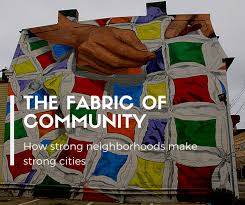In an era where technology increasingly mediates our interactions, the essence of community and society remains a cornerstone of our human experience. The interplay between these two concepts shapes the way we live, interact, and find meaning in our lives.
Understanding Community
At its core, a community refers to a group of individuals who share a common interest, place, or set of values. Communities can be as expansive as a global network united by a common cause or as localized as a neighborhood watch group. The strength of a community lies in its ability to foster a sense of belonging and mutual support among its members. This collective identity provides a framework within which individuals can pursue shared goals and offer each other assistance.
Communities play a crucial role in personal development. They offer social support, create networks for sharing resources, and provide platforms for collective action. The dynamics within a community can greatly influence individual well-being. For instance, a supportive community can buffer the effects of stress and improve mental health by offering emotional and practical support. Conversely, a lack of community can lead to isolation and a diminished sense of purpose.
The Role of Society
Society, on the other hand, encompasses the broader structures and institutions that shape and regulate our interactions on a macro level. It includes various social institutions such as the government, educational systems, and economic structures, which collectively form the framework within which communities exist. Society dictates the norms, values, and laws that govern behavior and interactions, providing a structure within which communities can thrive.
While communities are often formed organically, societies are typically more formalized. They include systems for governance, law enforcement, and public services, which work to maintain order and address collective needs. Society influences individual lives through policies, economic opportunities, and social services, impacting everything from access to healthcare to educational opportunities.
The Interconnection Between Community and Society
The relationship between community and society is symbiotic. Communities rely on societal structures to provide a stable environment in which they can function effectively. For example, public infrastructure such as parks, schools, and transportation systems, managed by societal institutions, supports community activities and fosters connections among individuals.
Conversely, communities contribute to the shaping of societal norms and policies. Grassroots movements often start within communities and can lead to significant societal changes. Historical examples include the civil rights movement in the United States and various local environmental initiatives that have influenced national policies.
The interaction between community and society is also evident in the way individuals navigate their roles within both spheres. People often identify strongly with their communities, which can influence their perspectives on societal issues. For instance, a community that values environmental sustainability may advocate for policies that promote green practices at the societal level.
Challenges and Opportunities
Both community and society face challenges in the modern world. The rise of digital communication has transformed how communities interact, often leading to both increased connectivity and a sense of fragmentation. Online communities can transcend geographical boundaries, yet they may lack the face-to-face interactions that traditionally strengthen bonds.
Similarly, societal structures are grappling with issues such as economic inequality, political polarization, and the need for systemic reform. The challenge is to create systems that are inclusive and adaptable to the needs of diverse communities.
However, these challenges also present opportunities. The global nature of modern communication allows for the exchange of ideas across communities and societies, fostering greater understanding and collaboration. Societal institutions can learn from successful community-driven initiatives and integrate innovative solutions to address pressing issues.
The Path Forward
Looking ahead, the future of community and society will likely be shaped by continued technological advancements and evolving social dynamics. Embracing the strengths of both can lead to more resilient and adaptable social structures. Communities that are actively engaged and supported by responsive societal systems will be better positioned to address challenges and capitalize on opportunities.
In essence, community and society are two sides of the same coin. Communities provide the personal connection and support that individuals need, while society offers the structural framework within which these connections can thrive. By nurturing both, we can create a more cohesive and supportive environment for everyone.
In conclusion, the fabric of our shared lives is intricately woven from the threads of community and society. Understanding and valuing this relationship is key to fostering a more connected and resilient world.



